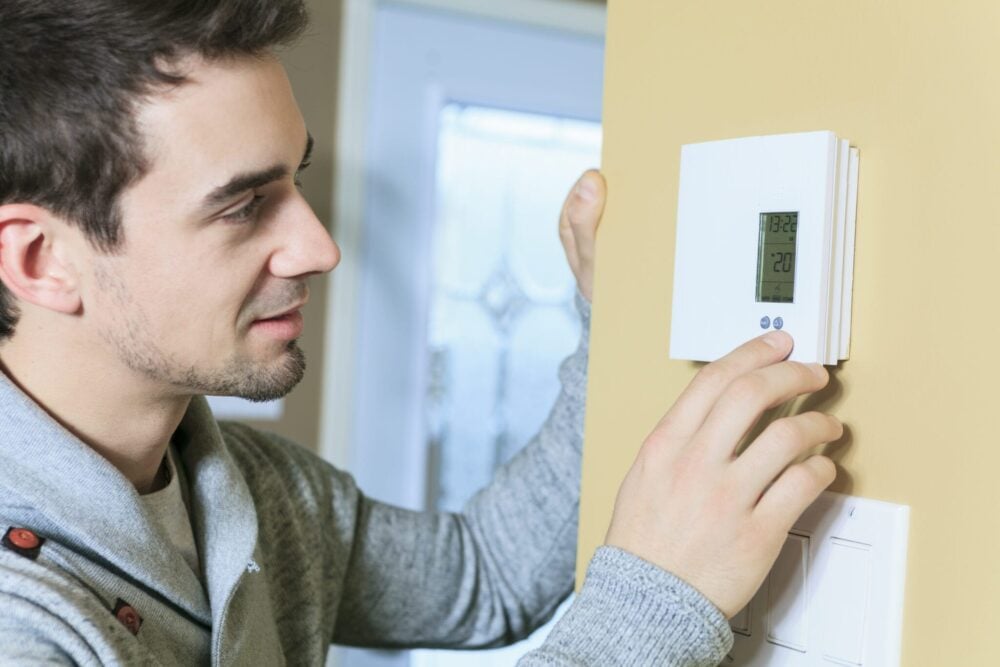Sustainability is more than just a trend, it’s becoming a way of life for many modern homeowners, and people are finding more and more creative ways to be more eco-friendly at home. The amount of high-tech gadgetry available to help you do so can be intimidating — installing solar panels and solar water heaters, adding insulation, or making a greywater system will all dramatically reduce your home’s impact on the environment. If those seem a little out of reach, here are some fun and cost-effective ways to make your home eco-friendly, starting now.
Get familiar with your city’s recycling and compost programs – and use them
“Reduce” is the first of the 3 R’s, so find out what your city’s protocols are for recycling, composting, and waste removal. Most cities offer comprehensive recycling and curbside pickup, but they will only recycle if you sort according to their requirements. Similarly, more and more cities offer composting programs for households that are unable to have a compost system of their own.
Get DIY happy
Did you know you can make a powerful scouring paste with some liquid castile soap and baking soda? Or that tea tree and lavender oils both disinfect surfaces and can easily be made into a counter spray that’s free from harmful chemicals? Look up some easy recipes online and prevent a whole lot of chemicals from entering your home as well as the environment. Make large batches and store them in pretty, reusable glass containers to reduce your impact further!
Conduct a household audit regularly
You don’t need to pay a consultant to do a regular check of your faucets, toilets, windows, and appliances. Look for leaks or drips, a toilet that has to refill itself regularly indicating it has a slow leak, and make sure your appliances are running efficiently. For your refrigerator, that means ensuring it has clearance between vents and the wall for airflow, as well as cleaning the ventilation grates of dust and residue for efficient flow. On a deeper clean level, have your hot water heater checked regularly as well. Minerals and sulfur can build up on the heating element, decreasing its efficiency drastically. Drafty windows? Simple adhesive strips of caulking can make a big difference, or make a long-term plan to make your home greener with energy-efficient windows.
Host your parties at home
Going out for dinner and drinks with friends can be fun, but it often includes a lot of waste – wasted food, gas, and a missed opportunity to get your friends and family together in the comfort of your home. Garden parties can be a great way to encourage going green, with local food-themed potlucks where everyone brings a take-home container to bring some of the bounties with them. Better yet, get your guests involved in planting your garden, maybe using the no-till method of “lasagna gardening” in a raised bed for the easiest route to excellent soil and chemical-free vegetables. In the winter, hosting potlucks at home will easily heat up your house and save you the trip out in the cold.
Take care of the little things, because they do make a difference
Changing your incandescent lightbulbs to CFLs can save up to 400lbs of greenhouse gas emissions per lightbulb. That’s a lot, and LED bulbs use even less. Adding aerators to your faucets can save up to 40% by reducing the rate of water flow, and low-flow showerheads will save on water as well as the electricity or gas used to power your hot water tank. A simple power strip with an on/off switch can help eliminate the “phantom drain” that slowly uses electricity, even though nothing is technically on. Simple, quick, and easy — but these steps have a big effect in the long run.
Painting? Choose Low- or No- VOC paints
When looking at how to make your home eco-friendly, the less-than-obvious things count too. You know regular paints are stinky, but did you know they off-gas toxic fumes long after the paint has dried? These chemicals not only hang out in your home, but they get into the water stream as you rinse your paintbrushes. Keep low-maintenance air purifying plants like Spider Plants, Pathos, Snake Plant, and Peace Lilies in your home to pull other unavoidable toxins out of the air, but choosing paint that won’t pollute is a great way to prevent them from entering your home in the first place. Check out our other eco-friendly moving tips!
Let those chores wait
Really — wait to do the laundry or run the dishwasher until you have a full load. A gentle pre-rinse of your dishes can help prevent last night’s dinner from becoming cemented to the silverware, and your socks won’t become that much stinkier with one more day. Similarly, don’t just water the lawn or garden out of habit. Either use a smart watering system that pays attention to the soil moisture, or monitor the gardens yourself to avoid unnecessary watering. Planting a native landscaped garden (or entire yard) can significantly cut down on the time, energy, and resources required to keep everything looking healthy as well.
Grow Your Own Food on Your Terrace of Balcony
Growing your own food is a great way to go green. This is especially true if you’re practicing organic gardening. Don’t have a backyard? No need to fret! Apartment dwellers can make use of terraces and balconies to grow not only flowers but also delicious healthy vegetables. Whether you want to make use of containers or planters that can easily be attached to a railing, fresh food with a low environmental footprint are within reach. Some foods that thrive in container gardens include broccoli, carrots, tomatoes, peppers, and squash. Not only will you take pride in growing your own vegetables and fruits, but you’ll also be reducing your carbon footprint by not making trips to the grocery store or using pesticides.
Moving into a new home? Check out our post about how to make your move eco-friendly from start to finish, and then let us help you find the best movers to get the job done.








